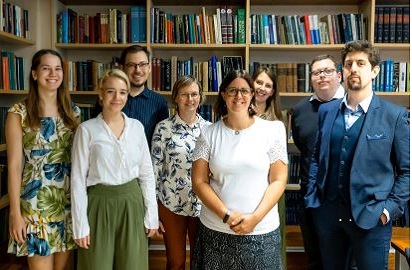Über uns
Über uns
The research group's activities focus on biomedical and pharmaceutical applications of materials in the nano and micro size range. Biomaterials are defined as materials that are produced or incorporated (synthetically) by living organisms. Synthetic materials whose composition, structure or function is derived from natural examples are called biomimetic materials. The research strategy of the group is to develop and explore the potential applications of third generation, mainly polymer-based bio- and biomimetic materials as implants with biocompatible and/or biodegradable properties, matrices for tissue engineering in the nano size range, carriers for controlled and targeted drug delivery, polymer gels for molecularly imprinting, biodegradable polymers with design degradability.
Forschungsbereiche
- The fundamental objective of the work in the laboratory is the preparation, functionalisation, colloidal chemistry and physical chemical characterisation of biocompatible colloidal particles. Investigating the biomedical applications of the systems produced, designing nanocomposite systems that incorporate the beneficial properties of both particles and polymers.
- Physicochemical studies of electrostatic fibre systems and testing of their interaction with cells for potential biomedical applications. The role of tissue engineering is to provide an alternative for the replacement of damaged tissues, starting with an extracellular matrix of engineered polymers. If a suitable scaffold structure can be provided, cells are able to penetrate and form a tissue structure. For this, electrostatic fibre formation and simple and fast technological solution process.
- The design of 3D structured fibrous systems has become the focus of electrostatic fibre researchers today. As the potential applications of such systems are very wide, but still limited by the very low porosity, high fibre density and pore size required by the application, various methods are used to try to vary and influence these parameters. This can be done both by varying the various input parameters during the fiber drawing process (e.g. by adding inorganic salts or varying the humidity) and by post-drawing methods (e.g. ultrasonic treatment)

